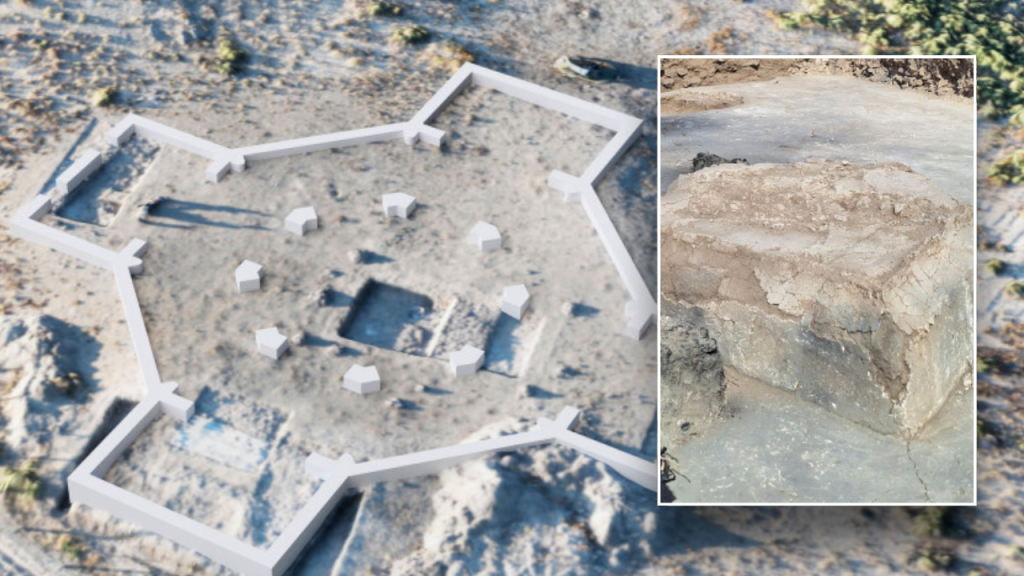Archaeologists recently discovered one of the oldest Christian churches in the world, believed to date back to the fourth century. The University of Münster in Germany, in collaboration with archaeologists from the National Academy of Sciences of Armenia, uncovered the remains of the ancient church at the Artaxata site in the Ararat Plain. The discovery, made after excavations that began in 2018, revealed an octagonal building with cruciform extensions. The team studied the church using geophysical methods and found wooden platforms dating to the mid-4th century AD in the cross-shaped extensions.
The octagonal church at Artaxata had a floor made of mortar and terracotta tiles, measuring around 100 feet in diameter. Fragments of imported marble from the Mediterranean were found, suggesting that the church was lavishly decorated. University of Münster Professor Achim Lichtenberger noted that this 4th-century building is the oldest documented church in Armenia, providing sensational evidence for early Christianity in the region. Legend has it that Gregory the Illuminator converted the Armenian king Tiridates III to Christianity in Artaxata in 301 AD, establishing Armenia as the first Christian state in the world. The medieval monastery of Khor Virap nearby serves as a reminder of this tradition, with Artaxata having been the capital of the Kingdom of Armenia for almost six centuries.
The University of Münster’s discovery sheds light on the early Christian presence in Armenia, a country with a long history at the crossroads of various empires. The find also highlights the significance of Artaxata, an important city that served as the capital of the Kingdom of Armenia during the Hellenistic period and beyond. The ancient ruins provide valuable insights into the development of Christianity in the region and the architectural styles of the early Christian period. The church’s design, with its octagonal shape and cruciform extensions, is characteristic of early Christian memorial buildings, showcasing the religious and cultural influences at play in Armenia during the 4th century.
The discovery of the ancient church at Artaxata adds to the growing body of archaeological evidence supporting Armenia’s status as the first Christian state in the world, established in the early 4th century. This finding underscores the country’s rich Christian heritage and its role in the development of Christianity as a major religion. The proximity of the church to the medieval monastery of Khor Virap and its association with the conversion of King Tiridates III by Gregory the Illuminator add to its significance in the religious and historical context of Armenia. The lavish decoration of the church, including fragments of marble imported from the Mediterranean, demonstrates the wealth and artistic sophistication of the early Christian community in Armenia.
The excavation of the ancient church at Artaxata represents a significant milestone in the study of early Christianity and the history of Armenia. The findings contribute to a better understanding of the spread of Christianity in the region and the architectural practices of the early Christian period. The discovery of the octagonal church with cruciform extensions and its lavish decoration offers important insights into the religious beliefs and cultural practices of the early Christian community in Armenia during the 4th century. The archaeological team’s use of geophysical methods to study the church and its surroundings further enhances our knowledge of the site and its historical significance in the context of early Christianity in Armenia.
Overall, the discovery of one of the oldest Christian churches in the world at Artaxata in Armenia is a testament to the country’s rich Christian heritage and its role as a key center of early Christian activity. The findings provide valuable insights into the architectural and religious practices of the early Christian period, shedding light on the cultural and historical significance of Armenia as the first Christian state. The octagonal church with cruciform extensions, its lavish decoration, and the association with the conversion of King Tiridates III highlight the importance of the site in the religious and historical narrative of Armenia and its enduring legacy as a center of early Christian faith.


